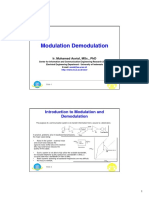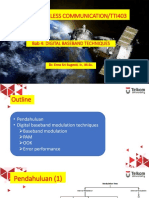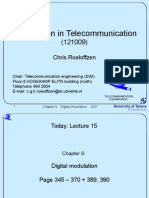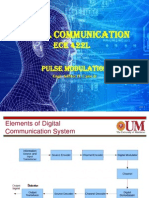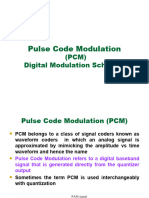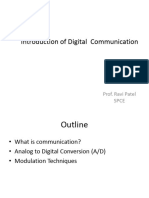0% found this document useful (0 votes)
25 views11 pages3.signals and Modulation
The document discusses the concepts of analog and digital signals, focusing on analog-to-digital conversion processes such as sampling, quantization, and encoding. It highlights the benefits of converting to digital, including reduced distortion and improved channel capacity, as well as the importance of modulation for enhancing communication efficiency. Additionally, it outlines different types of modulation, both analog and digital, and introduces the ISO OSI model for further exploration in the next lecture.
Uploaded by
profoebenCopyright
© © All Rights Reserved
We take content rights seriously. If you suspect this is your content, claim it here.
Available Formats
Download as PDF, TXT or read online on Scribd
0% found this document useful (0 votes)
25 views11 pages3.signals and Modulation
The document discusses the concepts of analog and digital signals, focusing on analog-to-digital conversion processes such as sampling, quantization, and encoding. It highlights the benefits of converting to digital, including reduced distortion and improved channel capacity, as well as the importance of modulation for enhancing communication efficiency. Additionally, it outlines different types of modulation, both analog and digital, and introduces the ISO OSI model for further exploration in the next lecture.
Uploaded by
profoebenCopyright
© © All Rights Reserved
We take content rights seriously. If you suspect this is your content, claim it here.
Available Formats
Download as PDF, TXT or read online on Scribd
/ 11

































